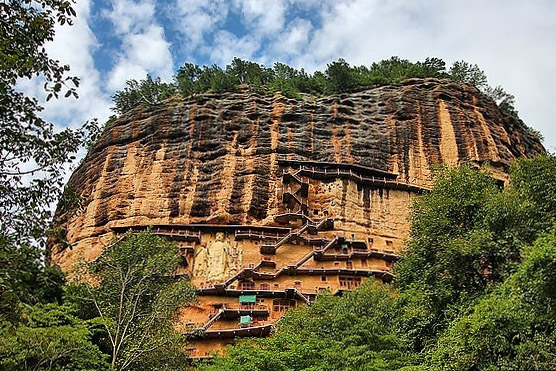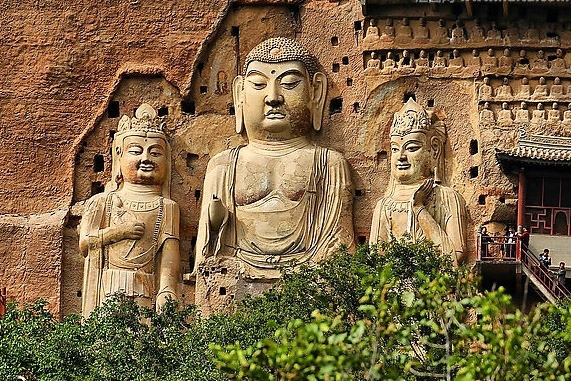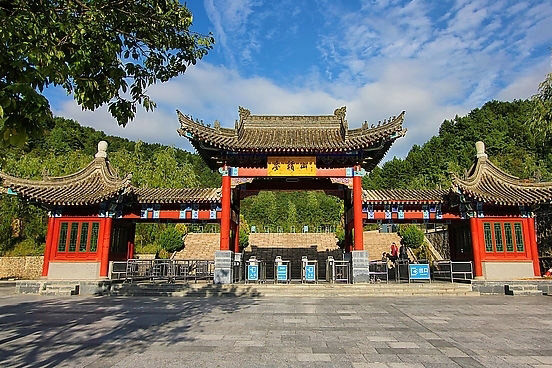Home > Attractions >
Maijishan Grottoes
Maijishan Grottoes lies to the southeast of Tianshui City, Gansu Province; it is one of the well-known Grottoes along the silk road. The excavation of Maijishan Grottoes was started in the Later Qin during the Northern & Southern Dynasties Period, dating back more than sixteen hundred years. Now Maijishan Grottoes host one hundred and ninety-four caves with more than seven thousand and two hundred stone statues and one thousand three hundred square meters of mural paintings.
In which I have to say it is a beautiful mountain in Xiaolong Mountain at the east end of Qinling Mountain in China. 1.742 meters above sea level and 30 kilometers away from Tianshui Train Station. Though only 142 meters high, the mountain has a strange shape and towering peak like wheat stacks, known as Maiji (wheat pile in Chinese). There are cliffs to the southwest of the summit. The famous Maijishan Grottoes were cut on cliffs, some 20-30 meters, and some 70-80 meters away from Maiji mountain base. It has been rare among Chinese caves to cut nearly 1,000 caves and Buddha statues in such precipitous cliffs.
When you reach the bottom of Maiji Mountain, you will see the green and beautiful scenery. On the exposed side of the rock wall, the layers of hanging trestles were built. The hanging frames were very dangerous, with a height of more than 600 meters. Many large and small caves and Buddha statues were excavated between the stools, and the pictures taken under the mountains were spectacular.
The travel route of Maijishan Grottoes is straightforward, as long as you walk up the wooden trestle road in the mountains, you can visit various Grottoes along the side. When you visit the caves, you will find that many of the wooden sidewalks under your feet are reinforced with cement, which is quite exciting. Maijishan Grottoes are well preserved. Nowadays, except for some unique caves, most of them can be visited. Walking on the trestle road, you can see that the Buddha cave's size is not spectacular at first, although the Buddha statues are tiny, many of them are protected by wire mesh. Meanwhile, there are many Buddha statues in the cave, and they are very miraculous.
When you visit the caverns, you can focus on the 135 caves (Paradise Cave), 142 caves, 37 caves, 127 caves, 44 caves, etc. Travelers can hear the classic Buddhist story and visit the exquisite sculptures, such as Flying Apsaras and other works.
The Cave 127 keeps the most of murals of the Western Wei State, making up the total. As to preservative sutras, illustrations continued to be earliest and most extensive in the area all over China. The full scene, tremendous momentum, and skillful at painting characterize it and be thought of as the world's curiosity. The murals of the Western Wei State are fresh and mellow in style, graceful and precise in line, natural in the rhythm though few being in actual existence. Many murals of the Northern Zhou State are preserved with diversity in the composition, accurate and vivid modeling, free and vigorous lines, worthwhile shade, Fresh and active scene. The five huge "Borousu" Flying Devi murals in the Seven Buddha's Attic are original creations of Maijishan Grottoes, and they wrote the new chapter in the painting history of the Northern Zhou State. The murals of the Sui Dynasty are harmonious in colors, fresh in style and tone, graceful in artistic conception, unique style, and form with spirit combined, although few in actual existence. Of a few existed murals of the Tang Dynasty, there are not without representative figure paintings. The Ming Dynasty murals enjoy the majority of those in actual existence, loud colors, and numerous styles characterize them, but no lack of beautiful works.
b) Self-driving Tour: There are three exits of Tianshui East, Jieting, and Dangchuan at the transit section of the G30 National Highway Scenic Area, of which the Tianshui East Exit is 10 km from Maijishan Grottoes, 15 km from Xianren Cliff, and 13 km from Jieting Hot Spring. Jieting Hot Spring is 3 kilometers away, 15 kilometers away from Xianren Cliff, and 12 kilometers away from Shimen Mountain. Dangchuan exit is 10 kilometers away from Shimen Mountain and 20 kilometers away from Xianren Cliff. Meanwhile, the national highways G310 and G316 in Tianshui can lead to the Maijishan Grottoes.
Related Articles & Posts
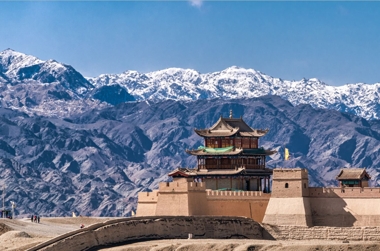 Jiayuguan Pass
Jiayuguan Pass 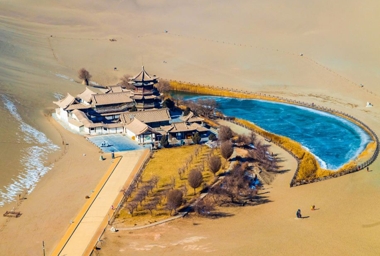 Mingsha Mountain and Crescent Moon Spring
Mingsha Mountain and Crescent Moon Spring
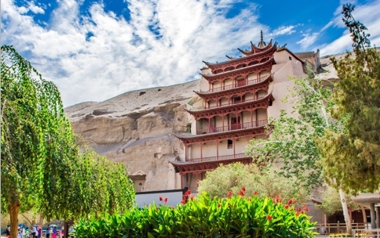 Mogao Grottoes
Mogao Grottoes 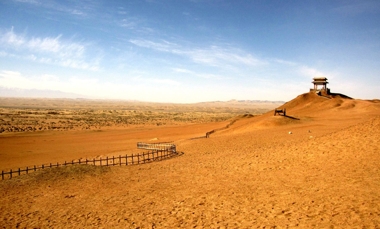 Yadan National Geological Park
Yadan National Geological Park
Recommended Gansu Tours
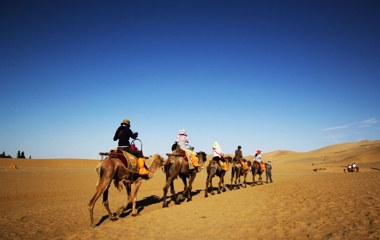 Lanzhou-Zhangye-Dunhuang Tour
Lanzhou-Zhangye-Dunhuang Tour 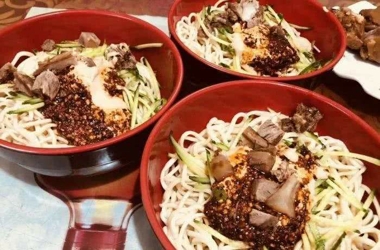 Silk Road Hexi Corridor Adventure
Silk Road Hexi Corridor Adventure
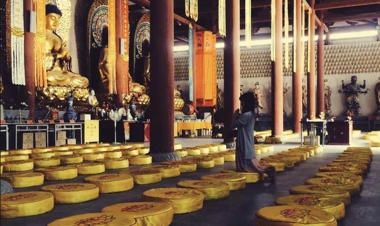 Gannan Tibetan Culture Exploration
Gannan Tibetan Culture Exploration 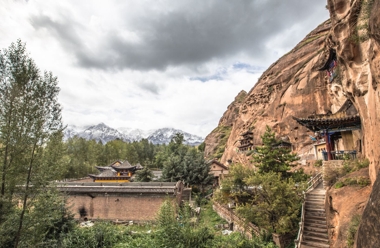 Gansu Tour and Badanjran Desert Safari
Gansu Tour and Badanjran Desert Safari
What to Visit in Maijishan Grottoes?
If you are a fan of Chinese Buddhist culture and art, Maijishan Grottoes might be an excellent choice. Entering this Oriental Sculpture Museum, you can enjoy the Buddhist art and visit the surrounding landscape, which is entirely worth visiting.In which I have to say it is a beautiful mountain in Xiaolong Mountain at the east end of Qinling Mountain in China. 1.742 meters above sea level and 30 kilometers away from Tianshui Train Station. Though only 142 meters high, the mountain has a strange shape and towering peak like wheat stacks, known as Maiji (wheat pile in Chinese). There are cliffs to the southwest of the summit. The famous Maijishan Grottoes were cut on cliffs, some 20-30 meters, and some 70-80 meters away from Maiji mountain base. It has been rare among Chinese caves to cut nearly 1,000 caves and Buddha statues in such precipitous cliffs.
When you reach the bottom of Maiji Mountain, you will see the green and beautiful scenery. On the exposed side of the rock wall, the layers of hanging trestles were built. The hanging frames were very dangerous, with a height of more than 600 meters. Many large and small caves and Buddha statues were excavated between the stools, and the pictures taken under the mountains were spectacular.
The travel route of Maijishan Grottoes is straightforward, as long as you walk up the wooden trestle road in the mountains, you can visit various Grottoes along the side. When you visit the caves, you will find that many of the wooden sidewalks under your feet are reinforced with cement, which is quite exciting. Maijishan Grottoes are well preserved. Nowadays, except for some unique caves, most of them can be visited. Walking on the trestle road, you can see that the Buddha cave's size is not spectacular at first, although the Buddha statues are tiny, many of them are protected by wire mesh. Meanwhile, there are many Buddha statues in the cave, and they are very miraculous.
When you visit the caverns, you can focus on the 135 caves (Paradise Cave), 142 caves, 37 caves, 127 caves, 44 caves, etc. Travelers can hear the classic Buddhist story and visit the exquisite sculptures, such as Flying Apsaras and other works.
The Murals in Maijishan Grottoes:
In the times of the 16-states, the murals of the Later Qin and Western Qin State, for the most, are out of existence, as for those only left, they were covered with the murals of the Western Wei State, 200-odd square meters within more than 40 caves, are kept in existence. They are rich in contents; flavor sought: lifelikeness stressed, well-versed in the painting, which is excellent works in actual reality.The Cave 127 keeps the most of murals of the Western Wei State, making up the total. As to preservative sutras, illustrations continued to be earliest and most extensive in the area all over China. The full scene, tremendous momentum, and skillful at painting characterize it and be thought of as the world's curiosity. The murals of the Western Wei State are fresh and mellow in style, graceful and precise in line, natural in the rhythm though few being in actual existence. Many murals of the Northern Zhou State are preserved with diversity in the composition, accurate and vivid modeling, free and vigorous lines, worthwhile shade, Fresh and active scene. The five huge "Borousu" Flying Devi murals in the Seven Buddha's Attic are original creations of Maijishan Grottoes, and they wrote the new chapter in the painting history of the Northern Zhou State. The murals of the Sui Dynasty are harmonious in colors, fresh in style and tone, graceful in artistic conception, unique style, and form with spirit combined, although few in actual existence. Of a few existed murals of the Tang Dynasty, there are not without representative figure paintings. The Ming Dynasty murals enjoy the majority of those in actual existence, loud colors, and numerous styles characterize them, but no lack of beautiful works.
Climate & Weather of Maijishan Grottoes, Tianshui:
Tianshui city has a temperate continental climate, with an average annual temperature of 11.5 degrees. From April to October is the best time to travel to Maijishan Grottoes; in summer, you can see the magnificent natural view and beautiful flower; in winter, the snow scenery of Maijishan Grottoes is quite amazing.How to Get to Maijishan Grottoes?
There are two ways to get to Maijishan Grottoes: Trains and Cars1. Go to Maijishan Grottoes by Train:
Take a train from Lanzhou West Railway Station to Tianshui South Railway Station, and it takes about 1h 20mins. Upon arrival, you have to take No.60 to Maijishan Grottoes.2. Drive to Maijishan Grottoes:
a) Take bus No. 5 from Tianshui City to Maijishan Grottoes.b) Self-driving Tour: There are three exits of Tianshui East, Jieting, and Dangchuan at the transit section of the G30 National Highway Scenic Area, of which the Tianshui East Exit is 10 km from Maijishan Grottoes, 15 km from Xianren Cliff, and 13 km from Jieting Hot Spring. Jieting Hot Spring is 3 kilometers away, 15 kilometers away from Xianren Cliff, and 12 kilometers away from Shimen Mountain. Dangchuan exit is 10 kilometers away from Shimen Mountain and 20 kilometers away from Xianren Cliff. Meanwhile, the national highways G310 and G316 in Tianshui can lead to the Maijishan Grottoes.
Related Articles & Posts
 Jiayuguan Pass
Jiayuguan Pass  Mingsha Mountain and Crescent Moon Spring
Mingsha Mountain and Crescent Moon Spring  Mogao Grottoes
Mogao Grottoes  Yadan National Geological Park
Yadan National Geological Park Recommended Gansu Tours
 Lanzhou-Zhangye-Dunhuang Tour
Lanzhou-Zhangye-Dunhuang Tour  Silk Road Hexi Corridor Adventure
Silk Road Hexi Corridor Adventure  Gannan Tibetan Culture Exploration
Gannan Tibetan Culture Exploration  Gansu Tour and Badanjran Desert Safari
Gansu Tour and Badanjran Desert Safari 
